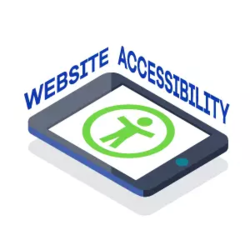When we architect a new or replacement custom software development platform, there are so many things to consider. After we’ve defined a clear platform roadmap, we dive into design with the intended users as the predominant factor in how we determine the scheme.
For instance, we all love vibrant colors and vivid graphics that augment our brand or visually tell our story. Those work really well when you are engaging your audience to build excitement and understanding around your organization’s mission. However, if your users are working with a lot of inter-related data points and need to weed through the platform to find specific answers or to identify issues efficiently, clean and simple is always our recommendation.
In addition to these opposing design influences, we must consider that the platform will also have users with physical, sensory or cognitive disabilities. Now the design requirements can become exponentially more complicated.
The Rehabilitation Act Amendments of 1998 require access to the federal government’s electronic and information technology when any federal agency develops, procures, maintains or uses such technology. Section 508 specifically outlines the technical requirements and criteria that are used to measure conformance. These requirements are continually updated, with the most recently ruling taking effect in January 2018.
Additionally, the World Wide Web Consortium (W3C) maintains the Web Content Accessibility Guidelines (WCAG), which set accessibility standards for the World Wide Web on an international level. WCAG 2.0 requires specific techniques for compliance and is more current than Section 508. Both standards are design to address the following impairments: 
A few of the prescriptive elements of making your site or web platform accessible include:
There are 38 criteria that list prescriptive methods in order to be in compliance, with 16 of them newer items prescribed in WCAG 2.0. For a quick reference guide, please click here.
Of course colors, fonts, graphics, and content are all very important. However in some cases, we must take all of these other factors into consideration with each custom software development project. As an example, check out one of the projects we made compliant in recent years. And if you happen to live in Hamilton County, go ahead and look up your property taxes!
Visit our Hamilton County Government project page to learn more about this award-winning custom user portal and how accessible, user-focused design can make all the difference in your objectives.
Posted in Business, Software Services